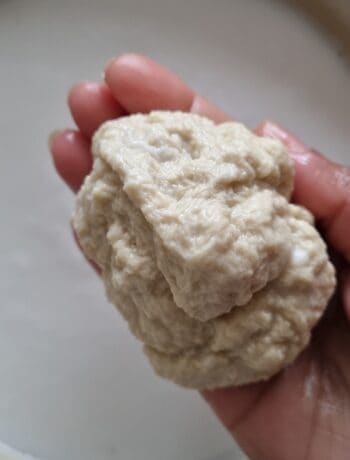With all the rain that’s been falling these past few weeks, we are going to make an experiment for the elements! Our challengers for today are fire and water. Today’s trial is going to test how far a candle can be submerged before the fire goes out. Let’s give the underwater candle a go.
As the school year resumes, I found myself stuck at home again with the flu. I was so bored! What better way is there to keep myself occupied than a few fire-y experiments? We have decided to bring back a magical memory from my childhood, the submerged candle, or the underwater candle experiment!
It is well known that fire and water are polar opposites, but here they seem to stand together side by side. As a young kid, I was always enraptured by the way this experiment worked, and it makes for great candlelight photos too! It can even be used during power outages to make the candle burn for longer. During my parents’ childhoods, it wasn’t uncommon to experience power outages. Candles were a popular and easy method that provided heat (not so much needed in the tropics) and light but would always run out quickly, so this way of putting them underwater would make them last longer. If you wait till the end, you’ll see the wax walls of the candle fighting to keep the water out. This experiment relies on very few things, one of which is your eyes, so be sure to keep watching! If you are a young person make sure you have an adult to help you. Remember, fire is a hazard so safety first.
Here’s how you can make an underwater candle.
What you need:
-A bowl
-A small candle
-A matchbox
-Water (enough to fill the bowl)
Instructions:
Pick up a bowl and measure such that the candle can sit in perfectly with about a centimetre on top when filled with water.
Light the candle using a matchstick. (Get an adult to help you with these steps)
Let a few drops of wax drip onto the bottom of the bowl. Put out the candle and stick it onto the wax firmly. This ensures the candle will not move when you fill it with water
After the wax has dried, begin to fill the bowl with water. The water level should almost reach the upper edge of the candle (be careful not to let it touch the wick!)
Ensure that the wick is standing straight. Light the candle again. Now starts the wait time.
As it melts and gets smaller, the wick will continue burning even when it is slightly below the water level! Keep watching as the candle keeps going till the water eventually floods in.
How does the candle burn “underwater”?
Candles are made of a material called paraffin wax. Like ice and water, when it is cold paraffin is solid, and when warm it is liquid. The underwater candle can burn below the water level because of the interface between the cold water and the candle. As the candle heats the paraffin wax melts. The cold water touching the outside will help regulate the temperature of the outside by absorbing the heat. This means that as the candle melts, the outside paraffin holds solid and will barricade it from any water trying to push its way in. Eventually, the shell will become too weak and the water will flood the candle, but not before the candle has sunk below the water level. Cool right? Try out this experiment and rate your experience in the comments below.
Other materials that can burn under water.
This candle is one of a few materials that can burn underwater, including myths like Greek fire and elements. Greek fire was a highly flammable liquid and was used as a weapon in the Byzantine empire (not by the Greeks!). It was said that water could not help put out the fire, which made the material even more hazardous. However, the recipe was so closely guarded that as decades passed, it became unknown.
The most impressive material that burns underwater is molten thermite, a mixture of rust and aluminium. With the help of some magnesium and a blowtorch, this powdered substance becomes a molten metal at a temperature of over 2000 degrees Celsius (4000 degrees Fahrenheit) and can keep burning underwater. Awesome!
The Burning Triangle.
Overall, all someone needs to light and sustain fire is three things. Oxygen, fuel and heat. These three ingredients make up the fire triangle or the burning triangle. Why? Well, oxygen or an oxidising agent is essential to make the reaction occur. The fuel not only aids the reaction but provides a means to keep burning. Finally, a source of heat ties it all together by starting the ignition. Together, these three materials make up the burning triangle!
Easy science experiments you must not miss trying.
We have been working on ideas that can be executed easily at home. Here are a few that we keep going back to
Connect with Cool brain.
Though Cool Brain emerged as a page under the Mildly Indian blog, the idea is to perform small experiments independently and invoke the joy of hands-on experiments. If you have been visiting our page, feel free to let us know what you think, especially ideas we can work on in the comments below. If you have a pinboard, pin these ideas in it so you can use them as needed. Connect with us on our Instagram or choose #coolbrain.
See you in the next post!






